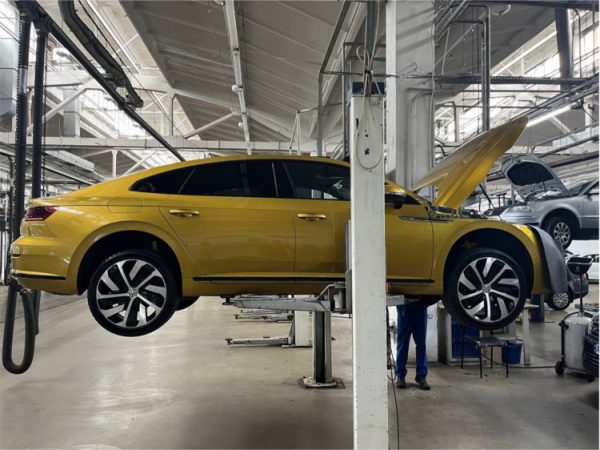Look, when you see your dream car for sale, you’ve already bought it in your mind.
Because you’ve earned it and you really want it.
But we always advise – don’t push the horses!
Your car will be yours, and CarFinder can help you hold off on impulsive decisions.
Let’s break it down:
Car service history — what it is and why it’s not just three sheets about oil changes without dates and mileage.
There is such a thing as a maintenance schedule.
In the past, cars were repaired when they broke down in the middle of the road.
This is also about non-compliance with regulations.
Every modern unit has its own regulations.
Whether it’s the clutch in the gearbox, belts, or chains.
Usually, spoilers and detailing are at the top of the to-do list after purchase, ahead of the necessary technical work required by regulations.
But in vain.
To see if a car has been properly maintained, we carefully analyze its history.
Not just recording the last mileage and date, but what was done and whether anything was done to the car at all.
Let’s get back:
Take the BMW with N20/N26 engines, for example: the oil in the gearbox is changed along with the replacement of the original pan. This costs about $500, give or take. Every 80,000 km is the rule of thumb. It will extend the life of the gearbox, which will give you thrills every day and shift gears quickly.
Timing chain: something technical, right?
But you’ll start to understand it if you ignore the need to replace it at 120,000 km. The engine will break down, hello Uklon and unplanned expenses.
Brake discs, pads, suspension, and a bunch of other stuff that’s better to replace before it breaks down.
You saw what we did — great. You already have an understanding of your future expenses when operating the car.
Of course, there are unplanned breakdowns and expenses. That’s okay. A used car periodically requires expenses and repairs. Just like a new one, which is a revelation for many new drivers. There is a warranty, and you pay more for it when buying a new car.
Maintenance affects pricing.
Let’s say you are now a seller.
Your powerful BMW 330i has been lovingly maintained over the past two years.
You regularly serviced it, did all the scheduled maintenance and more, as recorded in the service database.
And your neighbor has a similar 3 Series, which he has modified with a spoiler and other additions that will not extend the carefree life of a used car.
You both decide to change cars.
One car has nothing ahead of it except for another set of tires, while the other has $2-3 thousand in expenses. Preventively, or when the time comes.
How would you rate your cars?
It is fair to expect more for a well-maintained car with a proven service history than for your neighbor’s “clunker,” where all of this lies ahead.
Of course, you have to take into account that no two cars are completely identical. Some have more mileage, some have had minor accidents. It is important not to confuse what is primary and what is secondary. Proper maintenance is one of the important aspects when choosing a used car with mileage.
How to choose?
So that you don’t skimp on the car, and it has the desired options, mileage, and condition? This is where you need advice from the outside. Call it consulting. From experts who inspect a lot of cars every day and have a clear vision of how to combine the pros and cons of each candidate. The current condition, the need to invest, the overall pricing compared to market offers and, importantly, alternatives.
Many orders end up with something completely different than what the customer originally had in mind.
Why?
After seeing what is realistic and in what condition, the criteria for the car often change.
Gather all the advantages and consider the disadvantages. That’s the only way. Come on over!
